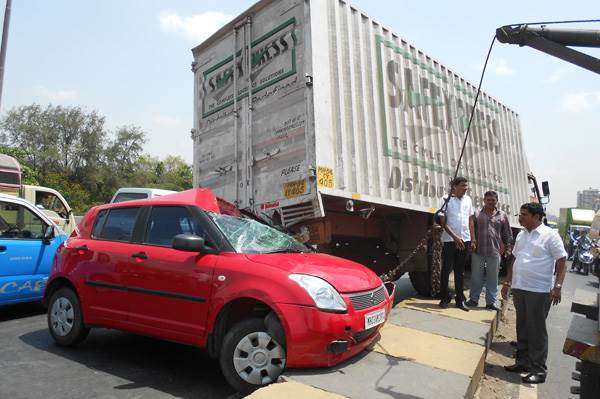Non-usage of seat belts were, at least in part, responsible for as much as 46 percent of serious to fatal road accident injuries on the Mumbai-Pune expressway between October 2012 and October 2013. This, and other chilling facts, have come to light following a study by independent crash investigation firm JP Research India. The study involved an in-depth analysis of 214 accidents, of which 68 resulted in serious (requiring hospitalisation for over 24 hours) or fatal injuries. On the basis of the investigations, the human, vehicle and infrastructure factors contributing to the occurrence of the accidents, and to injuries sustained thereafter, have been identified.
According to the study, human factors were fully or in part responsible for the occurrence of the majority of accidents. The leading causes included driver fatigue (29 percent), overspeeding for conditions (16 percent) and exceeding the speed limit (14 percent). Improper lane change, overtaking from the wrong side and following too closely were some of the other important causes. Infrastructure factors contributing to accidents largely related to inadequate signage and insufficient shoulders in the ghat sections. Brake fade, steering defects and tyre bursts were some of the vehicle related causes of accidents.
In the event of an accident, injuries were found to occur on account of a combination of human, vehicle and infrastructure factors. However, the non-usage of seatbelts was the biggest human factor responsible in part for 46 percent of accidents resulting in serious or fatal injuries. Many of these injuries were caused by an unbelted rear seat passenger slamming against the front seat in the event of an impact. What makes this scenario all the more worrisome is that it additionally poses a threat to the safety of a belted front seat occupant. Passenger overloading (number of passengers exceeding the seating capacity of the vehicle) was another cause for injuries in the event of an accident.
As for vehicle factors, passenger compartment intrusion was the cause of injury in as many as 70 percent of cases. Vehicle impact with manmade structures (such as concrete barriers) was the chief cause of injuries on account of infrastructural factors. Impacts with heavy vehicles and vehicle rollover accidents were the other significant causes for passenger compartment intrusion.
At present, India has the highest number of road accident deaths with 1,39,091 cases being reported in 2012 alone. If there’s a positive, it’s that the question of safety finally seems to be gaining some traction among Indian car buyers, particularly in light of NCAP’s report earlier this year on the crash-worthiness of five Indian cars. While JP Research’s study was carried out on the Mumbai-Pune expressway, its findings pertaining to the causes of accidents and injuries are largely applicable to the rest of India’s vast network of roads. It’s high time the government, car manufacturers and all road users work together to make our roads safer.
Nikhil Bhatia




Comments
Member Login
Personal Details
No comments yet. Be the first to comment.